Bisket Jatra/ Nepali New Year
Bisket Jatra, marking the advent of the Nepali New Year, is one of the most dramatic and awaited festivals in Nepal, particularly celebrated with grandeur in Bhaktapur, a UNESCO World Heritage Site located in the Kathmandu Valley. This ancient festival, steeped in tradition and legend, unfolds over several days and is characterized by its unique blend of cultural pageantry, religious devotion, and community spirit. It typically occurs in mid-April, aligning with the start of the new year according to the Bikram Sambat calendar, which is the official calendar of Nepal.

-
Festival Timing: Bisket Jatra marks the start of the Nepali New Year, typically falling in mid-April, and is celebrated with much fervor in Bhaktapur, a UNESCO World Heritage site in the Kathmandu Valley.
-
Chariot Procession: A central highlight is the dramatic chariot procession, where large wooden chariots bearing deities are pulled by crowds through the city's streets, symbolizing a communal spirit and religious devotion.
-
Tug-of-War Tradition: The festival features a symbolic tug-of-war between the eastern and western sides of Bhaktapur, representing the eternal battle between gods and demons, embodying themes of good prevailing over evil.
-
Pole-Raising Ceremony: The erection of a tall wooden pole ('lingo') signifies the official commencement of Bisket Jatra, followed by its lowering, which symbolizes the triumph of the community over malevolent forces.
-
Cultural Pageantry: Bisket Jatra is replete with traditional music, dance, and rituals, showcasing the diverse cultural expressions and historical tales deeply rooted in the local community.
-
Community and Family: The festival is a time for communal harmony and family reunions, where people engage in rituals for prosperity and share festive meals, reinforcing social bonds.
-
Opportunity for Visitors: For travelers, experiencing Bisket Jatra offers an unparalleled window into Nepalese traditions, where ancient practices are vibrantly alive in the modern day.
-
Relax Getaways Experience: Relax Getaways recommends Bisket Jatra as a must-visit for those looking to immerse themselves in the heart of Nepali culture, promising a blend of spiritual, historical, and communal experiences.
Bisket Jatra embodies the essence of Nepali New Year celebrations, offering a rich tapestry of cultural, religious, and communal activities that draw both locals and visitors into its spirited festivities.
Buddha Jayanti/ Purnima
Buddha Jayanti, also known as Buddha Purnima, is a significant festival celebrated across Nepal to honor the birth, enlightenment, and death (Parinirvana) of Lord Buddha, Siddhartha Gautama, the founder of Buddhism. This sacred day falls on the full moon day of the Nepali month of Baishakh (April-May) and is revered by Buddhists and non-Buddhists alike. Here are the key points about Buddha Jayanti:
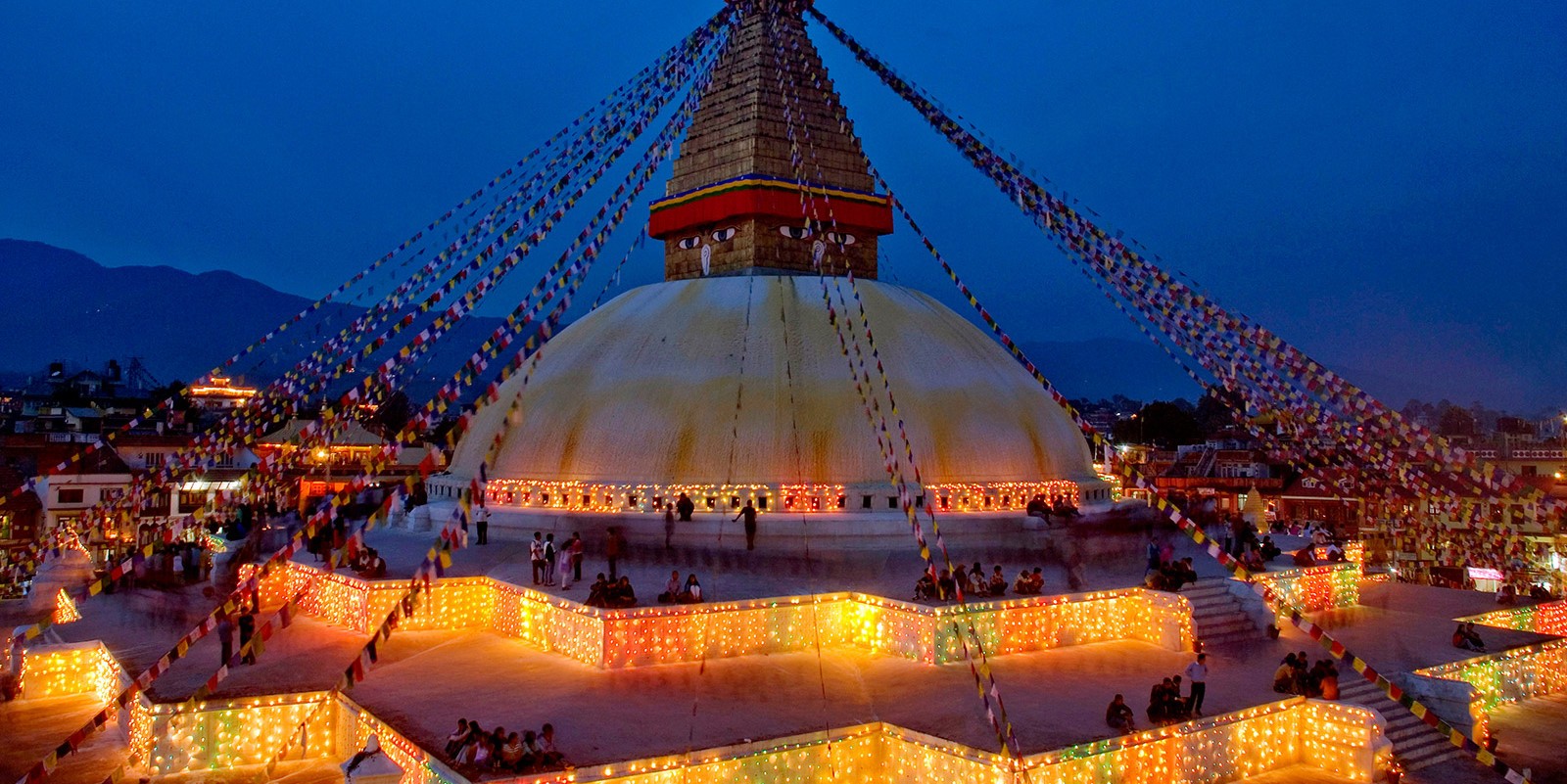
-
Triple Occasion: Buddha Jayanti commemorates three major events in the life of Buddha—his birth, enlightenment, and passing away, all of which, according to tradition, happened on the same calendar day.
-
Lumbini Celebrations: Lumbini, the birthplace of Lord Buddha located in Nepal, becomes the focal point of celebrations, attracting thousands of pilgrims from around the world to participate in prayers, meditations, and religious discourses.
-
Kathmandu Valley Festivities: In the Kathmandu Valley, significant activities take place at Buddhist stupas and monasteries, especially at Swayambhunath and Boudhanath, where devotees gather for prayers, offerings, and circumambulations.
-
Peace and Reflection: The day is marked by a peaceful and reflective mood, with people engaging in various forms of Buddhist practices, including meditation, chanting of mantras, and listening to Dharma talks.
-
Vegetarianism: Many followers observe a vegetarian diet on this day as a mark of respect for the Buddha's teachings on non-violence and compassion towards all living beings.
-
Cultural Exhibitions: Cultural programs and exhibitions related to Buddha's life and teachings are often organized, providing insights into Buddhist philosophy and history.
-
International Significance: Buddha Jayanti is not only celebrated in Nepal but also observed globally by Buddhists, highlighting its international significance in promoting peace, compassion, and wisdom.
-
Public Holiday: In Nepal, Buddha Jayanti is a public holiday, reflecting the country's reverence for Buddha and his teachings.
-
Relax Getaways Recommendations: For those wishing to experience the spiritual and cultural essence of Buddhism, Relax Getaways recommends visiting Nepal during Buddha Jayanti for a truly enriching experience.
Celebrating Buddha Jayanti in Nepal offers a profound insight into the peaceful teachings of Buddhism, set against the backdrop of the country's stunning natural beauty and rich cultural heritage. It's a time of reflection, celebration, and deep spiritual connection for visitors and locals alike.
Janai Purnima/ Raksha Bandhan
Janai Purnima, also known as Raksha Bandhan in some regions, is a significant Hindu festival celebrated across Nepal, marking the bond of purity and security. This festival usually falls in the month of Shrawan or August and is observed with great reverence by different communities throughout the country. Here are the key points about Janai Purnima/Raksha Bandhan:

-
Sacred Thread Ceremony: Janai Purnima involves the ritual of men, particularly Brahmins and Chhetris, changing their Janai (a sacred thread worn across the chest) after taking a holy bath. This thread signifies purity, discipline, and protection.
-
Rakhi Tradition: On the same day, the festival of Raksha Bandhan is celebrated by tying a Rakhi (a protective thread) around the wrist of brothers by their sisters. The Rakhi symbolizes the sisters' prayers for their brothers' well-being and the brothers' lifelong vow to protect their sisters.
-
Multicultural Observance: Though primarily a Hindu festival, Janai Purnima is celebrated by various ethnic groups in Nepal, each adding their unique customs and rituals to the celebration, showcasing Nepal's cultural diversity.
-
Holy Pilgrimages: Many devotees make pilgrimages to sacred rivers and lakes, such as the Gosainkunda lake in Langtang National Park, to take holy baths and perform rituals. These sites are believed to be especially auspicious during Janai Purnima.
-
Festive Foods: The festival is also associated with the preparation and consumption of special foods, most notably Kwati, a soup made from a mix of sprouted beans, symbolizing health and strength for the coming months.
-
Cultural Performances: In some regions, cultural performances, music, and dance are also part of the Janai Purnima celebrations, adding to the festive atmosphere.
-
String Bracelets for Protection: Apart from the Janai and Rakhi, people also wear Doro, a sacred yellow and red thread around their wrists, which is believed to offer protection and blessings from the gods. It is worn for a certain period and then tied to the tail of a cow during Tihar, guiding the soul to heaven.
-
Tourist Attraction: For tourists, Janai Purnima offers a unique opportunity to witness the rich cultural fabric of Nepal, with its myriad rituals and the communal spirit of harmony and protection.
-
Relax Getaways Insights: Relax Getaways suggests that visitors interested in the cultural and spiritual aspects of Nepal plan their trip around Janai Purnima to experience this festival's deep-rooted traditions and communal celebrations.
Janai Purnima/Raksha Bandhan encapsulates the essence of familial bonds, spiritual duties, and communal harmony, making it a profound cultural experience for both locals and visitors in Nepal.
Gai Jatra (Cow Festival)
Gai Jatra, known as the Cow Festival, is one of Nepal's most colourful and significant festivals, primarily celebrated in the Kathmandu Valley by the Newar community. This festival falls on the day after Janai Purnima, usually in August. Gai Jatra combines humour, satire, and the solemn remembrance of the departed souls over the past year. Here are the key aspects of Gai Jatra:
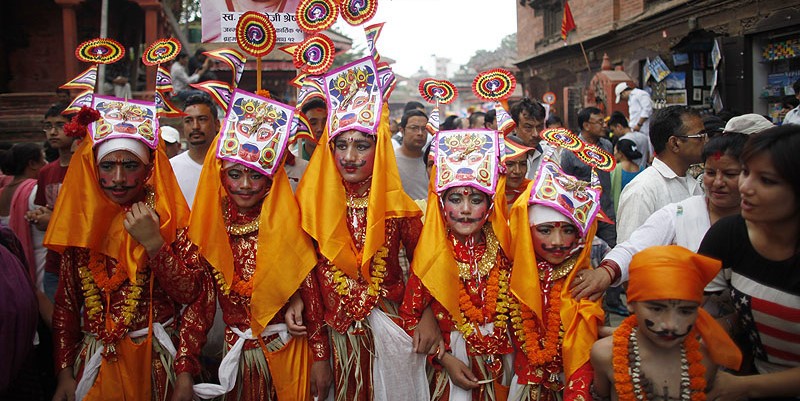
-
Commemoration of the Deceased: The core of Gai Jatra is to honor and remember the family members who have passed away during the previous year. It is believed that the procession helps the departed souls find their way to heaven.
-
Cow Processions: Cows, considered holy in Hinduism and believed to guide the departed souls to the afterlife, lead the processions. Families who have lost a loved one participate by either leading a cow or boys dressed as cows.
-
Colorful Costumes and Masks: The festival is marked by participants, especially young boys, dressing up in colorful costumes and masks, and parading through the streets. The costumes often include representations of deities, mythical beings, and even political figures, adding a layer of social commentary to the festivities.
-
Satire and Humor: Gai Jatra also serves as a platform for satire and humor, with street performances, jokes, and sketches that critique societal norms, politics, and other contemporary issues, making it a lively public spectacle.
-
Dance and Music: Traditional music and dance performances are integral to the Gai Jatra celebrations, with various troupes and community groups participating, adding to the festival's vibrant atmosphere.
-
Spiritual and Social Significance: Beyond its entertainment value, Gai Jatra holds deep spiritual and social significance. It is a day for expressing grief and finding comfort in the communal acknowledgment of loss, reflecting the Nepalese culture's approach to death and the afterlife.
-
Cultural Diversity: While Gai Jatra is primarily a Newar festival, it has been embraced by other communities in Nepal, showcasing the country's cultural inclusivity and diversity.
-
Tourist Attraction: For tourists, Gai Jatra offers a unique glimpse into Nepal's cultural richness, blending solemnity with celebration. It's an opportunity to see how festivals can serve as both a tribute to those who have passed and a means of societal reflection.
-
Relax Getaways Experience: Relax Getaways encourages visitors to participate in or observe Gai Jatra, providing insights into its historical background, cultural significance, and the various activities, ensuring a deep and meaningful experience of this unique festival.
Gai Jatra is a profound expression of Nepalese culture, embodying themes of life, death, and rebirth, and showcasing the community's resilience and capacity for joy even in the face of loss.
Indra Jatra
Indra Jatra is one of the most extravagant and revered festivals celebrated in the Kathmandu Valley, Nepal. This annual event marks the end of the monsoon season and is dedicated to Indra, the king of heaven and god of rain and harvest. It typically falls in September and lasts for eight days, filled with religious ceremonies, cultural performances, and processions that captivate locals and tourists alike. Here are the key highlights of the Indra Jatra:
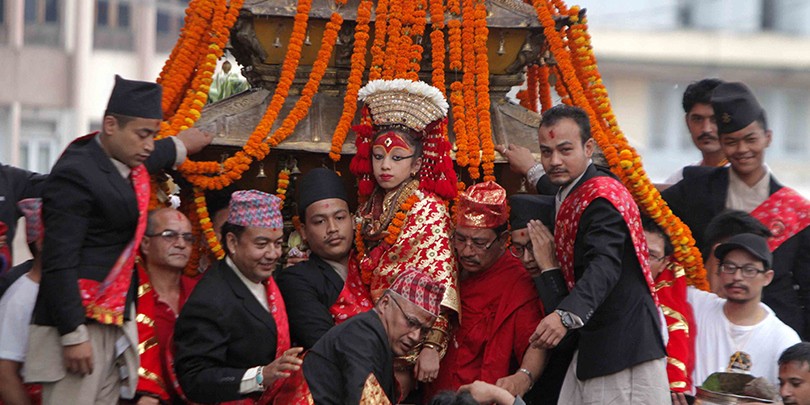
-
Kumari Jatra: A significant highlight of Indra Jatra is the Kumari Jatra, the chariot procession of the living goddess Kumari. During the festival, the Kumari, along with deities Ganesh and Bhairav, is paraded through the old city in elaborate chariots, allowing the public to receive blessings.
-
The Linga (Yasingh) Pole: The festival commences with the erection of a ceremonial pole known as the Linga or Yasingh at Hanuman Dhoka. This act symbolizes a call for Indra's attention and blessings for sufficient rain and a good harvest.
-
Masked Dances: Indra Jatra is renowned for its spectacular masked dances, such as the Lakhe dance, which features dancers in demonic masks and costumes performing in the streets, symbolizing the protection of the city from evil spirits.
-
Sacred Offerings: Offerings of fruits, flowers, and incense are made to Lord Indra and other deities. The streets and squares of Kathmandu are adorned with festive decorations, and the air is filled with the aroma of incense.
-
Indra’s Capture and Release: The festival also commemorates the mythological story of Indra’s capture by the people of the Valley when he came to earth in disguise to steal flowers for his mother. His eventual release is celebrated as part of the festivities.
-
Public Holiday: In Kathmandu, the main day of Indra Jatra is observed as a public holiday, with government offices and businesses closing to allow everyone to participate in the festivities.
-
Cultural Immersion: For visitors, Indra Jatra provides an unparalleled opportunity to experience the rich cultural heritage of Nepal. The festival is a living museum of ancient rituals, traditional music, and dances that have been passed down through generations.
-
Community Spirit: Beyond the spectacle, Indra Jatra fosters a sense of community and shared cultural identity among the residents of Kathmandu. It is a time for families to come together, pay homage to the deities, and celebrate the cultural legacy of Nepal.
-
Relax Getaways Recommendations: Relax Getaways suggests that travelers visiting Nepal during this time engage with the local festivities, witness the unique traditions firsthand, and immerse themselves in the vibrant atmosphere of Indra Jatra for a memorable cultural experience.
Indra Jatra not only celebrates the divine but also strengthens the bonds within the community, showcasing Nepal's spiritual depth and cultural vibrancy.
Teej
Teej is a vibrant and significant festival celebrated by Hindu women across Nepal and parts of India. This annual festival, held during the monsoon season, typically in August or September, is dedicated to the goddess Parvati and her union with Lord Shiva. It is a time when women, dressed in beautiful red saris, fast, pray for marital bliss, and the well-being of their husbands and families, and dance and sing traditional songs. Here are the key aspects of Teej:
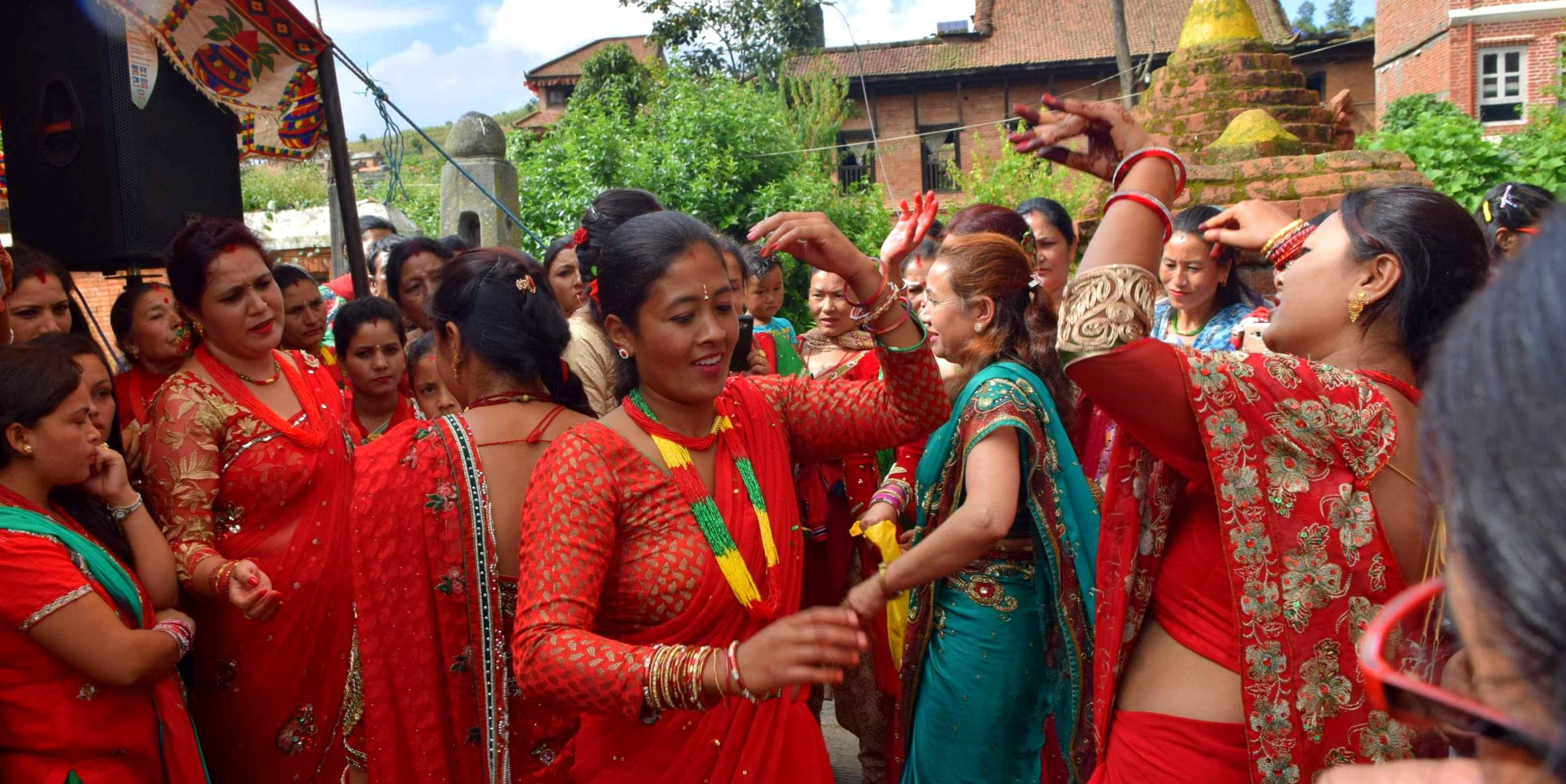
-
Fasting and Prayer: The heart of Teej is the rigorous fast observed by married women, which lasts for 24 hours without even a drop of water. Unmarried women also participate, praying to get a good husband like Lord Shiva.
-
Red Attire: Red is the colour of Teej, symbolising love and marital bliss. Women dress in red saris, bangles, and other adornments, making the festival a visually stunning spectacle.
-
Rituals and Offerings: The day before the fast, known as Dar Khane Din, families gather for a feast. On the fasting day, women visit Shiva temples to offer prayers, flowers, and fruits, and to light butter lamps.
-
Cultural Gatherings and Processions: In Kathmandu, a significant procession takes place with the sacred statue of Goddess Parvati carried through the city, accompanied by music and dance performances.
-
Dance and Song: Teej is also known for its lively dances and folk songs, where women express their pains and joys, hopes and desires, through music and dance, often continuing late into the night.
-
Social Bonding: Beyond its religious significance, Teej serves as an important occasion for social bonding among women, who share stories, laughter, and support.
-
Public Holiday: In Nepal, the main day of Teej is a public holiday, allowing all women to participate in the festivities.
-
Empowerment and Awareness: Besides celebrations, Teej has become an occasion for raising awareness about women's rights and issues, with various organisations hosting talks and programmes.
-
Relax Getaways Insights: For visitors, Teej offers a unique insight into the cultural and spiritual lives of Nepalese women. Relax Getaways recommends engaging with the local communities to experience the essence of Teej, from the bustling temple visits to the intimate gatherings of song and dance.
Teej is a festival that beautifully encapsulates the spirit of devotion, the joy of life, and the strength of communal bonds among women. It is a vivid, emotional, and deeply spiritual celebration that resonates with the core values of Nepalese society.
Dashain
Dashain is the longest and the most auspicious festival in the Nepalese annual calendar, celebrated by Nepalese people of all caste and creed throughout the country. This grand festival is observed for 15 days, starting from the bright lunar fortnight of Ashwin and ending on the full moon day, usually falling in late September to mid-October. It commemorates the victory of good over evil and is marked by family reunions, the exchange of gifts and blessings, and elaborate pujas (worship rituals). Here are the key aspects of Dashain:
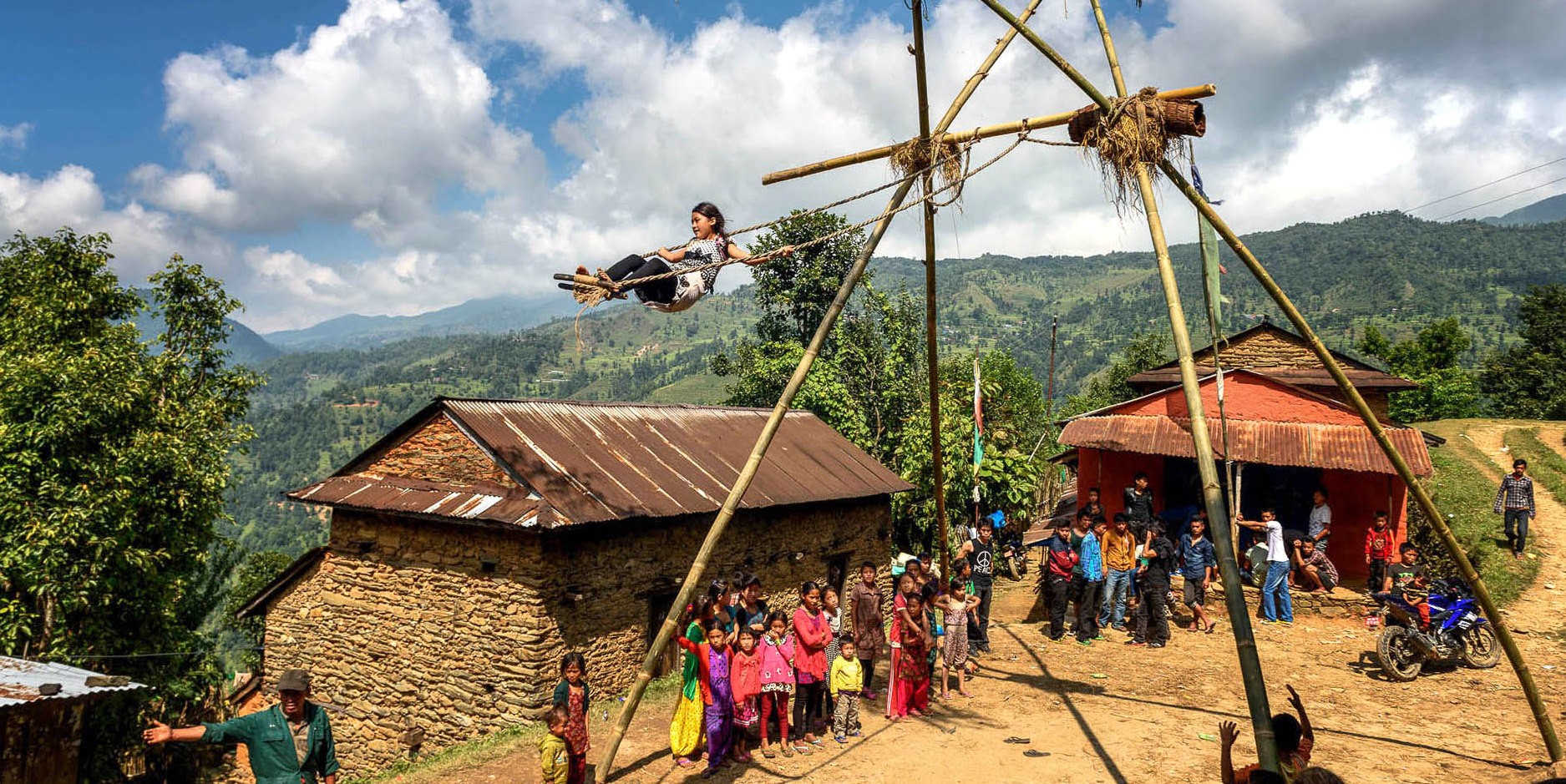
-
Ghatasthapana: Dashain festivities kick off with Ghatasthapana, the day when barley seeds are sown in sand as a symbol of growth and prosperity. It signifies the start of Navaratri (nine nights), a period dedicated to the worship of the goddess Durga.
-
Worship of Durga: The first nine days of Dashain are known as Navaratri. Temples dedicated to Durga and her manifestations are filled with devotees offering prayers and sacrifices.
-
Tika and Jamara: The tenth day, "Vijaya Dashami," is the most significant day of the festival. Elders put a tika (a mixture of yogurt, rice, and vermilion) and jamara (germinated barley shoots) on the foreheads of younger family members, blessing them with prosperity for the coming year.
-
Family Reunions: Dashain is a time for family reunions. People travel from all over the world and different parts of the country to be with their loved ones, making it the largest annual migration in Nepal.
-
Animal Sacrifices: Animal sacrifices to the goddess Durga and her manifestations are a common practice to appease the goddess. The sacrifices symbolise the fertility of the earth and its creatures.
-
Swings and Kites: The festival is also characterised by the erection of bamboo swings (ping) in many communities, and the sky is filled with kites. Both activities are symbolic of freedom, happiness, and the harvest season.
-
Shopping and Economic Activity: Dashain is a peak time for shopping, leading to a significant boost in economic activity. People buy new clothes, gifts, and goods, contributing to the festive atmosphere.
-
Cultural and Social Significance: Beyond its religious connotations, Dashain plays a crucial role in reinforcing social bonds and cultural identity among the Nepalese people.
-
Relax Getaways Recommendations: For those planning to visit Nepal during Dashain, Relax Getaways suggests immersing themselves in the local culture by participating in family feasts, visiting temples, and enjoying communal activities like swings and kites for a truly authentic experience.
Dashain not only symbolises the victory of good over evil but also reflects the deep-rooted cultural and familial values of the Nepalese people, making it a time of joy, reverence, and renewal.
Tihar (Deepawali)
Tihar, also known as Deepawali or the festival of lights, is the second biggest festival after Dashain in Nepal, celebrated over five days, usually in October or November. This festival, rich in cultural significance, honours not just the goddess of wealth, Laxmi, but also celebrates the bonds between humans, gods, and animals. Each day of Tihar has its own unique set of rituals and significance, making it a festival of lights, colours, and profound respect for nature and kinship. Here are the key aspects of Tihar:
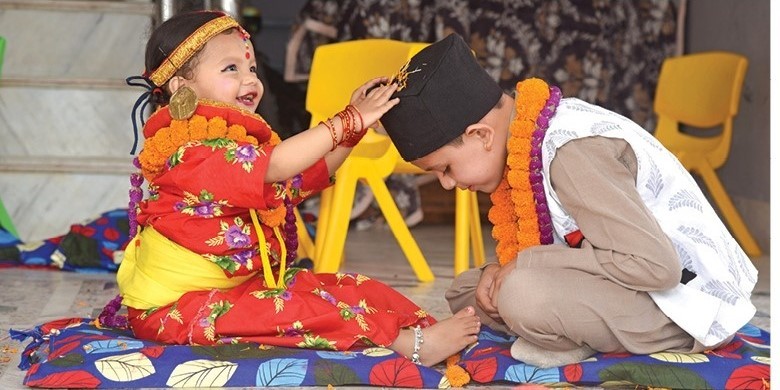
-
Kaag Tihar (Day 1): The first day is dedicated to crows, considered messengers of death. People leave sweets and dishes on their rooftops for crows to appease them, symbolising the warding off of grief and death from their homes.
-
Kukur Tihar (Day 2): The second day honours dogs, which are believed to be the messengers of Yamaraj, the god of death. Dogs are adorned with flower garlands, tilaka (a mark on the forehead), and offered delicious food. This day underscores the deep relationship between humans and dogs.
-
Laxmi Puja (Day 3): The third day is the main event, Laxmi Puja, where the goddess of wealth, Laxmi, is worshipped. Homes are cleaned, and doorways and windows are decorated with marigolds and lights to welcome the goddess. In the evening, diyas (oil lamps) are lit all around the house, and prayers are offered to invite prosperity and happiness.
-
Govardhan Puja (Day 4): This day is dedicated to the worship of Govardhan Mountain. Cow dung is used to make replicas of the Govardhan Hill, and cows are worshipped. In some communities, this day is also observed as Mha Puja, a Newari festival that celebrates the self.
-
Bhai Tika (Day 5): The last day of Tihar is Bhai Tika, where sisters pray for their brothers' long life and prosperity by applying a multi-colored tika on their foreheads. In return, brothers gift their sisters, and the occasion strengthens the sibling bond.
-
Deusi-Bhailo: Throughout Tihar, groups of young people visit homes in their community, singing and dancing the traditional Deusi-Bhailo songs, and in return, homeowners give them money, fruits, and sweets.
-
Community and Harmony: Tihar is a celebration that fosters a sense of community, harmony with nature, and the importance of familial and social bonds. It reflects respect for animals and acknowledgement of their roles in human lives.
-
Cultural Immersion: For tourists, Tihar offers a mesmerising experience with its nights illuminated by lights and days filled with cultural richness. It’s an ideal time to witness the hospitality and warmth of Nepalese culture.
-
Relax Getaways Insights: Relax Getaways recommends experiencing the diverse traditions of Tihar by participating in local celebrations, witnessing Laxmi Puja, and enjoying the festive atmosphere that pervades Nepal during this time.
Tihar is a beautiful amalgamation of cultural rituals, environmental consciousness, and familial love, celebrated with much fervor and joy across Nepal. It not only illuminates the country with physical lights but also with the light of happiness, prosperity, and unity.
Lhosar (Tibetan New Year)
Lhosar, the Tibetan New Year, is a significant festival celebrated with great enthusiasm in Nepal, particularly by the Sherpa, Tamang, Gurung, and Tibetan communities residing in the country. Marking the beginning of the lunar new year, Lhosar is observed with various traditional rituals, cultural performances, and communal gatherings, reflecting the rich cultural heritage of the Himalayan region. It usually falls in February or March, depending on the lunar calendar. Here are the key aspects of Lhosar:
.jpg)
-
Preparation and Cleaning: The celebration begins with households cleaning their homes to sweep away any bad fortune and make way for incoming good luck and prosperity. This act of cleaning is symbolic, representing a fresh start for the new year.
-
Special Foods: The festival is known for its special dishes, such as Gurung bread, Tibetan momos, and other traditional foods that are prepared and shared among family, friends, and neighbours to foster community bonds and celebrate the new year.
-
Religious Observances: Lhosar is also a time for religious practices. People visit monasteries, offer prayers, and perform rituals to honour their deities and ancestors, seeking blessings for the year ahead.
-
Cultural Displays: The festival features vibrant cultural displays, including traditional dances, music, and the wearing of ethnic costumes. These performances are a vital part of Lhosar, showcasing the rich cultural traditions of the Himalayan communities.
-
Tashi Delek: The greeting "Tashi Delek" is widely used during Lhosar, meaning "good luck" or "blessings." It is a way to wish others happiness and prosperity in the new year.
-
Community Gatherings: Lhosar is a time for large community gatherings and celebrations. People come together to enjoy the festivities, exchange gifts, and share in the joy of the new year.
-
Public Celebrations: In places with significant Sherpa, Tamang, Gurung, and Tibetan populations, public celebrations are held, which include parades, traditional music and dance performances, and the hoisting of prayer flags, adding to the festive atmosphere.
-
Tourist Attraction: For tourists, Lhosar offers a unique opportunity to experience the cultural diversity of Nepal and witness the traditional New Year celebrations of the Himalayan communities. It's a time when the rich cultural tapestry of Nepal is vividly on display.
-
Relax Getaways Recommendations: Relax Getaways encourages visitors to Nepal during Lhosar to participate in the celebrations, visit local monasteries, and experience the warmth and hospitality of the Himalayan communities as they usher in their new year.
Lhosar not only marks the start of a new lunar year but also embodies the hopes, prayers, and aspirations of the Himalayan people. It is a celebration of renewal, cultural pride, and communal harmony, offering a glimpse into the ancient traditions and vibrant customs that enrich Nepal's cultural landscape.
Maha Shivaratri
Maha Shivaratri, translated as "the Great Night of Shiva," is a significant Hindu festival celebrated with devotion and enthusiasm across Nepal, especially at the Pashupatinath Temple in Kathmandu, one of the most sacred temples of Lord Shiva. This festival falls on the 14th night of the new moon during the Hindu month of Phalguna, which usually corresponds to February or March in the Gregorian calendar. Devotees observe this auspicious night by fasting, chanting prayers, and offering rituals to honour Lord Shiva, the god of destruction and regeneration. Here are the key aspects of Maha Shivaratri:
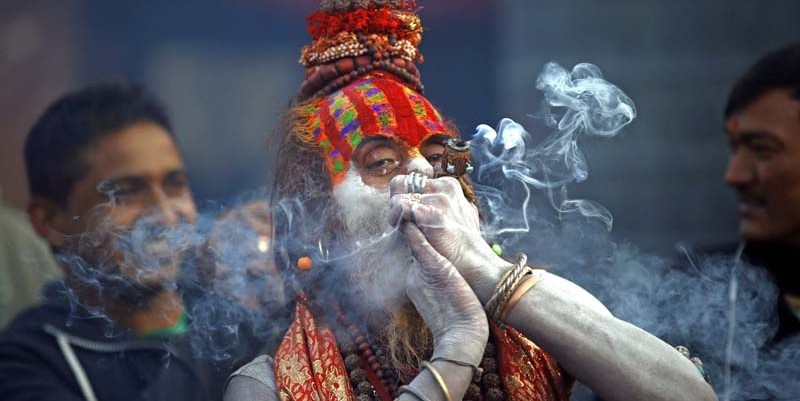
-
Night Vigil: The core ritual of Maha Shivaratri involves a night-long vigil or jaagaran, where devotees stay awake throughout the night, praying and meditating. It is believed that staying awake in devotion to Lord Shiva brings blessings and fulfilment of wishes.
-
Fasting: Devotees observe a strict fast on Maha Shivaratri, consuming only fruits and milk. Some may even refrain from consuming water. The fast is broken the next day after the night vigil and morning rituals.
-
Ritual Baths: Taking a ritual bath, especially in the holy rivers, is considered auspicious and is believed to purify the soul. Many pilgrims take a dip in the Bagmati River flowing beside the Pashupatinath Temple before offering prayers.
-
Offerings to Shiva: The worship of Lord Shiva involves offering special items that are dear to him, including bael leaves (wood apple leaves), flowers, fruits, and milk. Devotees also apply three horizontal lines of holy ash to their foreheads, symbolising Shiva's attributes.
-
Pashupatinath Temple Celebrations: The Pashupatinath Temple, a UNESCO World Heritage Site, becomes the focal point of the festival, attracting hundreds of thousands of pilgrims from Nepal and India. The temple premises are filled with sadhus (holy men), some smeared in ash and others in vibrant attire, performing rituals and offering blessings to the visitors.
-
Cultural Performances and Sadhus: Maha Shivaratri is also an occasion for various cultural performances, including classical dance and music that are dedicated to Lord Shiva. Sadhus, known for their austere lifestyle and devotion to Shiva, gather at Pashupatinath, displaying their devotion and practices to the public.
-
National Holiday: In Nepal, Maha Shivaratri is observed as a national holiday, reflecting its importance in the cultural and religious life of the Nepalese people.
-
Spiritual Significance: The festival symbolises the victory of light over darkness and knowledge over ignorance. It is a day for introspection, meditation, and seeking the blessings of Lord Shiva for prosperity and happiness.
-
Relax Getaways Recommendations: For those interested in experiencing the spiritual fervour and cultural richness of Nepal, Relax Getaways suggests visiting during Maha Shivaratri. Witnessing the celebrations at Pashupatinath offers a profound insight into Hindu traditions and the devotion of the Nepalese people.
Maha Shivaratri is not just a religious observance but a deep spiritual journey that offers devotees and visitors alike a chance to experience the divine and the eternal in the vibrant cultural tapestry of Nepal.
Fagu Purnima (Holi)
Fagu Purnima, widely known as Holi, is celebrated with great enthusiasm across Nepal, marking the arrival of spring and the victory of good over evil. This vibrant festival, which typically falls in March, is characterised by the throwing of coloured powders and water, symbolising the colourful and joyous essence of life. Here are some key highlights of Fagu Purnima in Nepal:
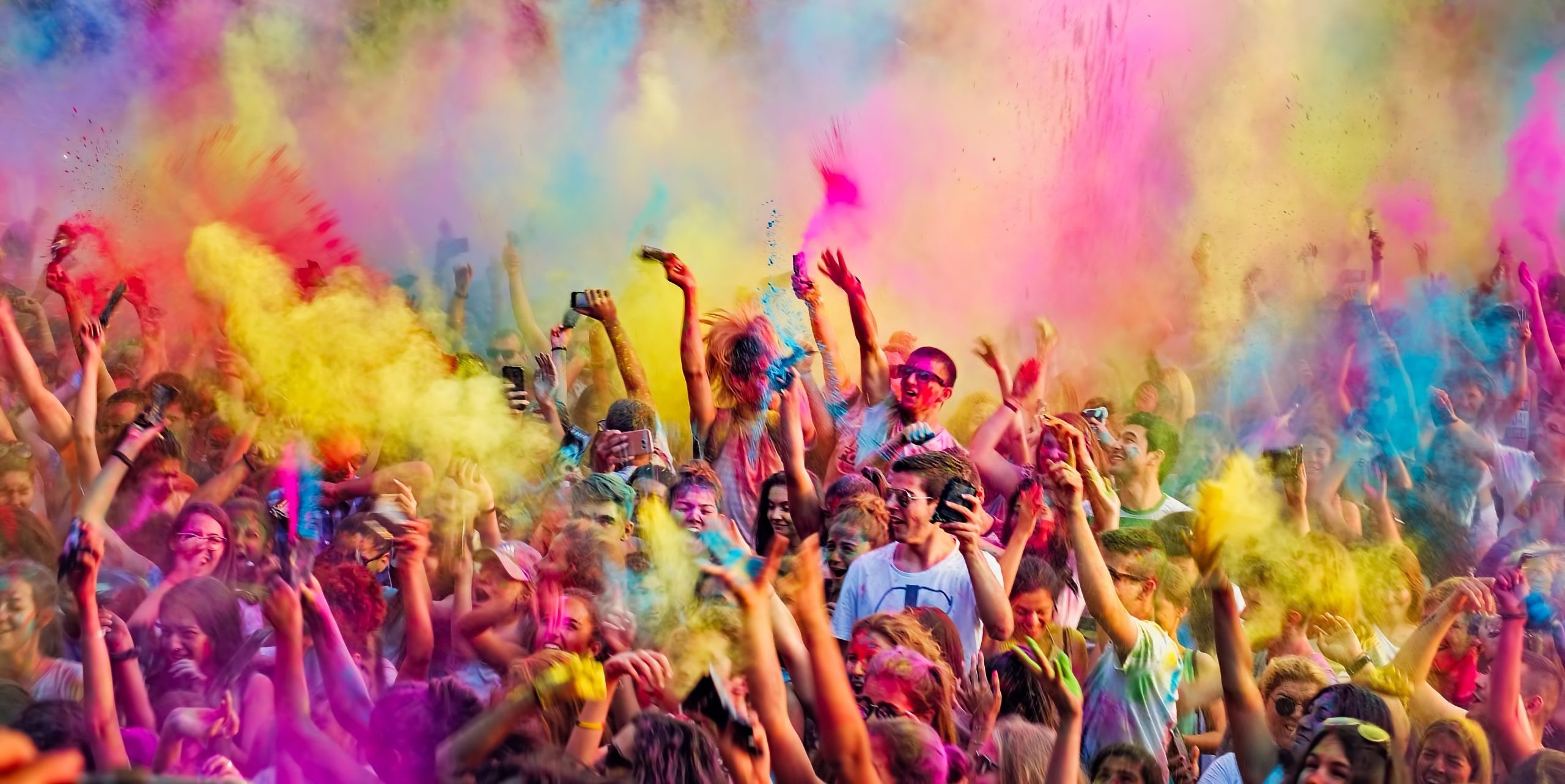
-
Colourful Celebrations: The main attraction of Holi is the play with colours. People, young and old, smear each other with colored powders and splash water, creating an atmosphere filled with laughter and joy.
-
Community Gatherings: Squares and open spaces in cities and villages become gathering spots where friends, families, and even strangers come together to celebrate, dance, and sing.
-
Cultural Significance: Holi commemorates the legend of Prahlad and Hiranyakashipu, highlighting the triumph of faith and goodness over arrogance and evil. Bonfires are lit on the eve of Holi, symbolising the burning of evil spirits.
-
Musical Celebrations: Music is essential to Holi, with traditional and contemporary songs played throughout the day. Groups of people also move from house to house, singing Holi songs, and dancing.
-
Special Foods: Festive foods and drinks, such as gujiya (a sweet dumpling), and bhang (a traditional drink made from cannabis), are prepared and enjoyed among adults, adding to the festival's spirit.
-
Tourist Participation: Tourists are warmly welcomed to join in the celebrations. Many find it a unique opportunity to experience the openness and warmth of Nepalese culture firsthand.
-
Regional Variations: While the festival is celebrated across the country, the intensity and style of celebrations can vary. In the Terai region, Holi is celebrated a day later than in the hilly regions.
-
Safety and Respect: Participants are encouraged to use safe, natural colours and respect others' comfort and boundaries during the celebrations.
-
Cultural Events: In major cities like Kathmandu, Pokhara, and Bhaktapur, cultural programmes and events are organised, featuring music, dance, and performances related to Holi.
-
A Day of Unity: Holi serves as a day to mend broken relationships, with people embracing and wishing each other "Happy Holi," regardless of age, gender, caste, or religion, fostering a sense of community and unity.
Fagu Purnima is a festival that beautifully captures the essence of Nepal's cultural diversity and the spirit of inclusiveness and celebration. It offers an unforgettable experience of joy, togetherness, and the vibrant hues of life.
Tourist Attractions During Nepali Festivals
Nepal, during its festival seasons, transforms into a kaleidoscope of colours, rituals, and celebrations, offering tourists a unique blend of cultural experiences and natural beauty. Here are some tourist attractions that become especially vibrant during Nepali festivals:
Kathmandu Valley
-
Durbar Squares of Kathmandu, Patan, and Bhaktapur: These historic sites come alive during festivals like Indra Jatra, Dashain, and Tihar, with processions, traditional dances, and rituals. The living goddess Kumari's appearances during the Indra Jatra are a major attraction.
-
Pashupatinath Temple: A focal point during Maha Shivaratri, attracting thousands of Sadhus (holy men) and devotees for night-long prayers and rituals.
-
Swayambhunath and Boudhanath Stupas: Vibrant during Buddha Jayanti and Losar (Tibetan New Year), with prayer flag hoisting, butter lamp lighting, and monastic dances.
Lumbini
- The birthplace of Lord Buddha turns into a pilgrimage site during Buddha Jayanti, with international monks, devotees, and tourists gathering for prayers and ceremonies.
Pokhara
-
Known for its serene beauty, Pokhara's Phewa Lake and the surrounding area host vibrant celebrations during festivals like Tihar, with their reflections of the myriad lights and fireworks in the water.
-
The city is also a starting point for treks during festivals, offering unique cultural insights into the celebrations in the Annapurna region.
Bhaktapur
- Famous for its Bisket Jatra celebration, featuring chariot processions and tug-of-war competitions. The entire city becomes a stage for traditional Newari culture.
Patan
- Renowned for its intricate metal works and architecture, Patan celebrates Krishna Janmashtami with great fervour at the Krishna Mandir, attracting devotees and tourists alike.
Thimi
- Celebrates Bisket Jatra uniquely with colorful processions and the throwing of vermilion powder, making it a lively place for photographers and cultural enthusiasts.
Bandipur
- Offers a traditional Newari festival experience with its preserved cultural heritage and panoramic views of the Himalayas, especially during Dashain and Tihar.
Gosaikunda
- During Janai Purnima, pilgrims trek to this sacred lake, offering a blend of spiritual journey and natural exploration.
Tengboche Monastery in Everest Region
- During Mani Rimdu, this monastery becomes a hub for Sherpa culture with masked dances and rituals, providing a spiritual insight into Himalayan Buddhism.
Mustang
- Celebrates Tiji Festival, a lesser-known but visually spectacular event involving masked dances and ancient rituals, offering a glimpse into the unique cultural landscape of the Himalayas.
Visiting Nepal during its festivals not only allows tourists to witness the vibrancy of Nepalese traditions but also provides an opportunity to explore the country's natural beauty and historical landmarks enriched with stories and festivities.
Tips for Visit Nepal during Festivals
Visiting Nepal during its vibrant festivals can be a deeply enriching and unforgettable experience. Each festival brings its own unique blend of rituals, celebrations, and cultural significance, offering visitors a glimpse into the country's rich heritage. To ensure you have a fulfilling journey, here are some tips for visiting Nepal during festival times:
-
Research and Plan Ahead: Each festival has specific dates that can vary each year according to the lunar calendar. Research the dates and plan your trip accordingly. Booking flights and accommodations well in advance is advisable, as many festivals are national holidays, and places can fill up quickly.
-
Dress Appropriately: Nepalese festivals are often religious or cultural events, and dressing modestly is respectful. For festivals like Teej or religious ceremonies, consider wearing traditional attire or at least conservative clothing.
-
Engage with Locals: Nepalese people are known for their hospitality and warmth. Engaging with the locals can enrich your festival experience. Many will be happy to explain the significance of rituals and traditions.
-
Be Prepared for Crowds: Popular festivals, especially those celebrated in major cities or at significant temples, can attract large crowds. Be mindful of your belongings, and be prepared for more crowded transportation and public spaces.
-
Respect the Customs: While participating in or observing the festivals, always show respect for the customs and traditions. Ask for permission before taking photographs, especially of religious ceremonies or people.
-
Learn a Few Phrases: Knowing a few basic Nepali phrases can go a long way in connecting with locals and showing respect for their culture.
-
Stay Healthy: Festival times, especially in crowded areas, can raise health concerns. Drink bottled or purified water, eat at clean establishments, and carry hand sanitizer.
-
Participate Where Appropriate: Some festivals may allow and even encourage visitor participation, such as playing Holi or attending open-air concerts during Tihar. Joining in respectfully can be a highlight of your trip.
-
Use a Local Guide: For an in-depth understanding of the festivals, consider hiring a local guide. They can provide insights into the history and rituals of the celebrations and help navigate the logistical aspects of attending large festival events.
-
Be Flexible: Finally, maintain flexibility in your travel plans. Festivals can sometimes lead to changes in public transport schedules or open hours for certain attractions. Embrace the unexpected as part of the adventure.
Relax Getaways emphasises the importance of experiencing Nepal's festivals not just as a tourist but as an active participant in the country's living culture. Following these tips can help ensure that your visit during Nepal's festival season is both enjoyable and respectful of the traditions you're there to celebrate.
Visiting Nepal during its festival season offers a unique and enriching experience, immersing travellers in the vibrant culture and deep-rooted traditions of this beautiful Himalayan country. From the lively colours of Holi to the spiritual reverence of Maha Shivaratri, each festival provides a glimpse into the communal harmony and rich cultural tapestry of Nepal. Relax Getaways encourages travellers to dive into these celebrations, where ancient customs come alive and the warmth of Nepalese hospitality shines brightest. Whether it's participating in the rituals, savouring the festive foods, or simply enjoying the spectacle of lights and dances, visiting Nepal during its festivals promises memories that last a lifetime. It's an invitation to not just observe but become part of Nepal's living, breathing cultural heritage.
FAQs for Visit Nepal during Festivals
Q. What is the best time to visit Nepal for festivals?
A. The best time to visit Nepal for festivals is during the spring (March-May) and autumn (September-November) seasons. These periods host major festivals like Dashain, Tihar, and Holi, offering pleasant weather and vibrant celebrations.
Q. Can tourists participate in the festivals?
A. Yes, tourists are often welcomed to participate in many of the festivals. For instance, during Holi, everyone is invited to play with colors, and during Tihar, visitors can join in the Deusi-Bhailo songs and dances.
Q. What should I wear when attending festivals in Nepal?
A. Modest and culturally respectful clothing is recommended when attending festivals. For religious festivals, it's advisable to wear clothes that cover shoulders and knees. During festivals like Holi, wear old clothes that can get stained.
Q. Are there any specific safety tips for tourists during festival times?
A. Yes, it's important to be cautious of pickpocketing in crowded areas, stay hydrated, and follow local guidance on health and safety, especially in regards to consuming food and drinks from street vendors.
Q. How can I learn about the dates and locations of festivals in Nepal?
A. Festival dates can vary each year, as many are based on the lunar calendar. Checking with the Nepal Tourism Board, local embassies, or your travel agency like Relax Getaways can provide accurate and up-to-date information.
Q. Is it acceptable to take photos during the festivals?
A. Photography is generally acceptable, but always ask for permission before taking photos of people or religious ceremonies. Be respectful of areas where photography might be restricted.
Q. Do festivals in Nepal affect transportation and accommodation availability?
A. Yes, during major festivals like Dashain and Tihar, transportation can be busier than usual, and accommodations may be booked up quickly. It's advisable to book your travel and stay well in advance.
Q. Are there any specific customs I should be aware of when attending festivals in Nepal?
A. Each festival has its own set of customs. Showing respect by participating quietly and observing local etiquette, especially in religious settings, is appreciated. Learning a few phrases in Nepali to greet and thank hosts can also enhance your experience.
Q. Can I bring gifts for local children or families during festivals?
A. Bringing small gifts or contributions to local communities can be a kind gesture, especially during festivals. It's best to consider culturally appropriate items or donate through established charities or community leaders.
Q. How can Relax Getaways enhance my festival visit to Nepal?
A. Relax Getaways can provide guided tours that offer deeper insights into the cultural significance of the festivals, assist with navigating the celebrations, and ensure you have a comfortable and enriching experience, including accommodations, transport, and access to special events.
For the Nepal Tour, please click here.
If you are looking for different kinds of Nepal Packages, feel free to contact us.
.jpg)









.jpg)


